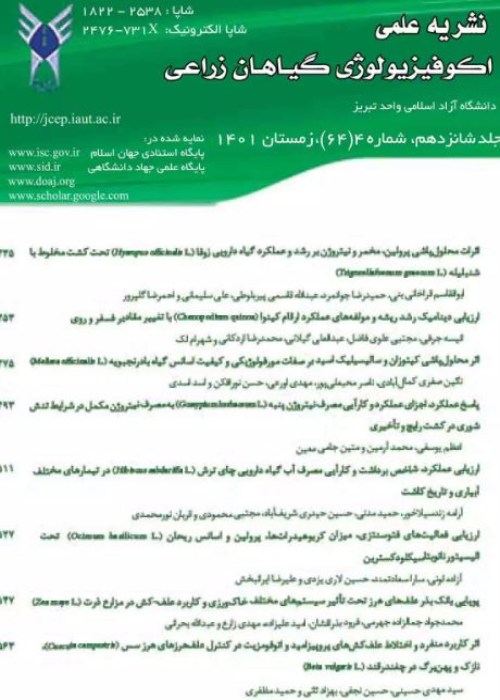Evaluation of Species Diversity and Population Indices of Weeds in Chickpea Fields under Dry-land of Kermanshah Province
Weed identification is considered the most fundamental task in weed management. It would be possible to decide on specific methods of weed control through availability of weed information in a particular location, otherwise applying different methods of control will not show satisfactory effects. To evaluate the species diversity and population indices of weeds in dry-land winter chickpea fields at four counties of Kermanshah province, 30 fields were investigated in 2015. The sampling was done based on W method at twenty points in each field. All weed species in each quadrate were identified and counted on the basis of genus and species. The indices of density, frequency, uniformity, abundance index, and relative diversity for each species were calculated and 44 weed species belonging to 22 different families were identified: 18% of families belonged to Asteraceae, 13% to Fabaceae, 11% to Brassicaceae, and 9% to Poaceae of all the weeds identified 89 percent of belonged to dicotyledons and 11 percent to monocotyledon. The broad leaf weeds of winter dry-land chickpea of Ravansar county based on dominance were common chicory (Cichorium intybus), european bindweed (Convolvulus arvensis), cow cockle (Vaccaria pyramidata) and stichy willie (Galium tricornatum), respectively. In Kermanshah county the european bindweed (Convolvulus arvensis), common chicory (Cichorium intybus), stichy willie (Galium tricornatum) and yellow goatsbeard (Tragopogon major), were the dominant weeds, respectively. Also, at Dalahoo county the common chicory (Cichorium intybus), stichy willie (Galium tricornatum), cow cockle (Vaccaria pyramidata) and wild licorice (Glycyrrhiza glabra), were dominant weeds, respectively. In west Islamabad county the dominance was related to common chicory (Cichorium intybus), European bindweed (Convolvulus arvensis), wild mustard (Sinapis arvensis) and yellow goatsbeard (Tragopogon major), respectively.
- حق عضویت دریافتی صرف حمایت از نشریات عضو و نگهداری، تکمیل و توسعه مگیران میشود.
- پرداخت حق اشتراک و دانلود مقالات اجازه بازنشر آن در سایر رسانههای چاپی و دیجیتال را به کاربر نمیدهد.


